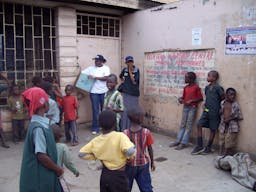My opEd first Draft
Jan 21, 2015
Story
I will really appreciate your feed back on my opEd.
My opEd first draft:
There is a saying among Zambian women that AIDS can kill us in months or years but hunger can kill me tomorrow. This year (2009) the ministry of health launched the male circumcision policy. With reports of some men both HIV positive and negative refusing to use a condom, should the leaders focus on partial prevention measures rather than the drivers of HIV and AIDS?
The fight against HIV and Aids can not be effective without addressing the core drivers of HIV and AIDS. Poverty, multiple concurrent partners and alcohol abuse remain to be the core drivers of HIV and AIDS in a developing nation like ours. In as much as the leaders continue to embrace and donate millions of kwacha to new partial prevention measures male circumcision, neglecting the main problem HIV and AIDS will continue to spread.
Zambia has a population of approximately 12million people. With the HIV prevalent at 14.3 percent, new infections of HIV are reported every year. Since the invention of HIV and AIDS in 1984 in zambia, the poverty levels have continued to accumulate. In the mid 1990th the Zambian economies declined due to the privatization and closer of some companies such as mines. Due to this the poverty levels began to increase because people lost and lacked employment. About two third of zambian live in poverty.
Excessive beer drinking due to unemployment and lack of activity has lead youths to illicit sex. Young girls and women, widows are faced to indulge in sexual activities to fight poverty. Multiple concurrent partners have also remained a cycle through which HIV and Aids is Spread. Despite the free ARVS, HIV positive people avoid to take them as they are too intoxicated and when eaten on an empty stomach may cause other problems.
The network for strategic planning reports that, in Zambia the spread of HIV/AIDS and poverty are strongly linked. Therefore addressing HIV/AIDS issues that matter to the poor is critical to reducing the infection among the poor. Among the issues that need to be addressed in the poor communities are the lack of recreation activities; girls exchanging sexual favors for basic necessities of life such as body lotion, clothes especially under-wears, school fees and transport money and menstrual pads.
In 2007 World Health Organization (WHO) and United Nation AIDS (UNAIDS) recommended male circumcision as a prevention measure .It is believed to reduce approximately 60% in risk heterosexually acquired HIV infection. The prevention still requires using a condom for further prevention. This shows the uncertainty of the practice. Women are still at risk of contracting the HIV virus when the have sex with a circumcised man who refuses to use a condom.
International community magazine for women (icw) 2008 conference, ICW members reported that newly circumcised men happily shared information that they can now have sex without using a condom.British medical journal (17 July 2009)new reports suggest that circumcising HIV-positive men does not reduce the risk of their female patners becoming HIV-infected. This also show that male circumcision is one sided, man are more protected than women.
A young male HIV activist concerned about the issue wondered whether african men who are believed to be sexually active can manage to abstain from sex for six weeks after circumcision. During this period, chances of contracting and infecting the virus is high. Reports on some men both HIV positive and negative denying to use a condom are still vast . It is uncertain whether with male circumcision, men will be willing to use a condom, since it is said to be a prevention measure.
Professor Nkandu Luo argued that HIV and AIDS is a complex issue. The fight against HIV and AIDS has to be thought through, male circumcision alone as a strategy can not be used as an intervention to fight HIV.
My views are that government and leaders both local and internation should focus on eradicating the drivers of HIV such as poverty, risk behaviours.Creation of employment, promote positive behaviuor change and other effective prevention tools such as absteinance, condom use and be faithful (ABC) should be strongly considered in order to combat HIV and AIDS.




